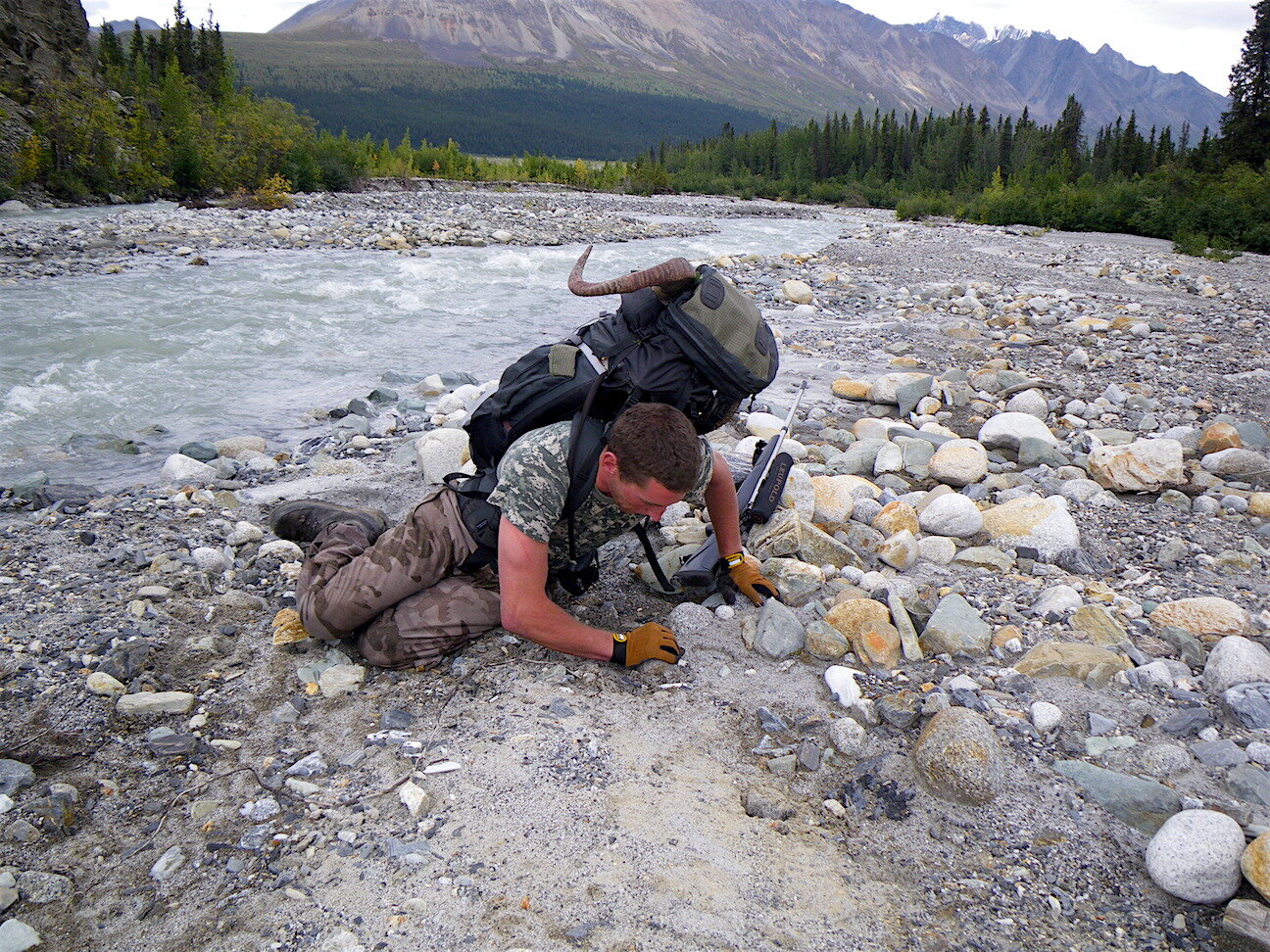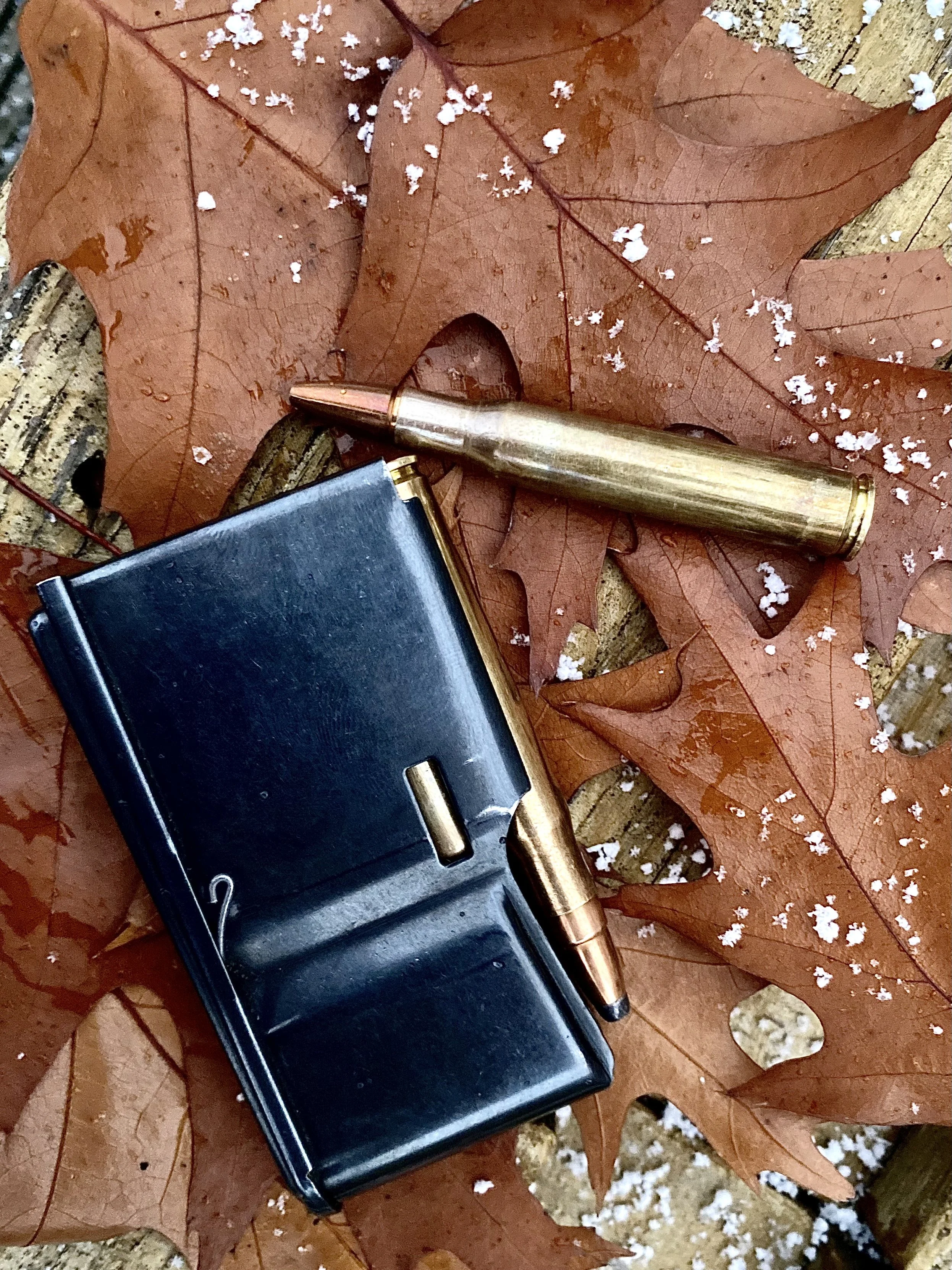Number 1 Essential Survival Tool (And More)
Thirty six years ago a survival instructor, Papa Bear Whitmore, introduced me to the world’s most essential survival tool. I’ve carried one ever since. It has helped me stay alive while “a mite confused” on the Alaskan tundra, while wading through 30-below blizzards on the northern Plains, while dehydrated in the high desert, miles from any water. Everyone can afford this essential survival tool. I recommend every hunter, hiker, angler, camper, birder, and berry picker get one and train rigorously in its proper application because…
It works wet or dry, hot or cold, light or dark
It costs nothing and adds no additional weight to your kit
It enhances all your other survival tools
Photo shows a hunter lying on a blue camping pad beside a campfire with a small, folding handsaw lying nearby. Using his essential survival took to plan ahead enabled him to make this comfortable camp.
By now the suspense must be killing you. Unless you already have the world’s most essential survival tool. In which case you would calmly keep reading, knowing that this smart-aleck suspense writer will eventually spill the beans. Like right now:The number one tool for surviving emergencies is your brain under control. Yes, your wits. Your smarts. Calm, controlled, rational thinking.
Survival Experts Endorse the Brain As Most Essential Survival Tool
You were expecting a 1,000-tool Swiss Army Knife with hot water spigot and a freeze dried cabin, right? You are disappointed. I know. I was too. At first. But then I realized how much truth and power Papa Bear had just given me. As he went on to point out, dozens of victims have been found dead while surrounded by life-saving shelter, heat, water and food. But they lost control, panicked, and died needlessly. Some had ignited all their matches, thrown away compasses, abandoned tents, and even stripped off coats in order to run more quickly toward hypothermia. Idaho survival expert and instructor Rob Anderson of Idaho has seen the same thing. He emphasizes the psychological aspects of survival in his AdventureIQ survival training classes.
So don’t discount this “mental” advice. Embrace it. Your most effective, versatile, essential survival tool truly is your brain and your ability to control it. Keep your wits about you and you can generally ponder your way out of most survival crises. And a great way to start is with pre-visualization and mental training, the same thing peak athletes do. Run potential survival scenarios through your head and figure out how you’d handle them.
Two backpackers standing on mountaintop in snow blizzard. Carrying everything you need to survive demonstrates advanced planning and use of your most essential survival tool -- your brain.
Pre-visualize to Prepare for Survival Situations
Thinking about what a human needs to survive should be your foundation for these exercises. Don’t freak-out over food and drink. Humans can carry on for several weeks without food, about three days without water. But try holding your breath for a minute… We rarely consider simple breathing when imagining survival situations, but get trapped underwater or in an enclosed space and oxygen becomes a big deal.
Next on your list could be not bleeding to death. So learn the first-aid tricks for stopping veinous and arterial hemorrhaging. What about freezing to death? File this under shelter, fire building, or merely keeping your clothes intact and dry, which is your basic shelter. You win at least half that battle by choosing the right clothing for each outdoor adventure before launching it.
Continue down this mental check list and you begin to appreciate your essential needs. Then you can imagine and prepare for how you’ll meet them in survival situations you might face. They will differ widely if you hunt sheep at 14,000 feet, ducks on big lakes, or elk in a montane forest in October.
Additional Tools to Enhance Your Essential Survival Tool
Regardless where and when you find your outdoor crisis, here are a few basic tools that’ll help your brain get you out of the jam:
Clothing: This is your basic shelter, so get it right. Polyester fleece or wool for wet, cold climates, cotton for humid and hot. Rain jacket and pants or poncho. Durable, tough, real boots like these Kenetreks that’ll carry you over rough, stoney, thorny terrain.
Fire Starter: This doesn’t mean just a few matches or butane lighter - although it's always wise to carry those. You also want a tool that’ll spark hundreds of fires in adverse conditions. The best I’ve seen is the Lightning Strike by Holland. This aluminum barreled ferrocerium striker rod directs a cascades of sparks like a blow torch to ignite even stubborn, damp tinder. And there’s enough dry, highly flammable tinder in the hollow handle to start 20 fires.
Knife: A multi-tool might be the best option. Blades, pliers, awls, rasps, saws, screwdrivers, wire cutters — who know’s what will come in handy in an emergency?
Water: You hope you’ll find an emergency supply on the land itself, but if you have the space and strength to carry a liter or two, do.
Light: I can generally get along without this, but survival is easier with it, especially if someone is looking for you. Brite-Strike APALS signal beacons weigh less than a stick of gum, run for up to 200 hours and can be seen from two miles. An LED headlight lets you see while using both hands.
Pain Killers: A few Ibuprofen, Naprosin, aspirin, etc. could ease the pain of a torqued ankle, broken ribs, etc. enough to let you continue pressing forward.
Image shows a man lying on ground encased in black garbage bags and a silver aluminum emergency blanket.
Rope: A few yards of parachute cord. Make splints, tourniquets, lashing — or just help lower yourself off a small cliff. Those braided bracelets and belts are perfect.
Nylon Tarp or Industrial Strength Garbage Gag: Rain shelter, wind break, ground cover.
You can add more to this list, but there's a limit to how much you can carry. Pare it down to the essentials, starting with that incredible brain of yours, and you'll be well on your way to becoming a survival expert.A combination of luck, caution, the right gear, and judicious use of his essential survival tool have enabled author Ron Spomer to survive nearly 50 years of outdoor adventures around the world.











